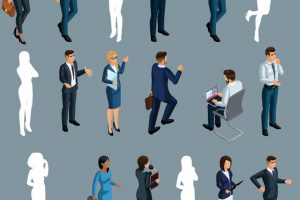By Sam Gutterman
I enjoy attending the Sundance Film Festival in Utah each year. Sometimes, I even get some actuarial ideas from the movies I see—for instance, a couple of years ago the main theme was “risk.” The range of independent dramas and documentaries presented is always amazing.
A handful of the films this year made me think about economics. Modern economic theory has focused its attention on increasing the efficiency of transactional-based systems. This concept needs to be reexamined—in many ways, it has contributed to more problems than it has solved.
I am not contending that efficiency should be ignored—just that it should be but one of several considerations involved in the development and management of a system or its processes. In some cases, both qualitative and quantitative inputs to decision-making are needed.
I have two primary concerns: First, there are often other factors to be considered in making decisions than efficiency, and second, such a system demands expected performance that rarely occurs.
In the film Food and Country, I was struck by an increased emphasis on efficiency in the evolution of our food supply chain beginning in the 1950s and 1960s, which gathered steam in the 1970s. On the surface, this seems like a good thing—lower costs for food input are bound to lead to lower prices for all consumers—what can be bad about that?
But the 1970s also just happened to be when American society was beginning its current obesity and inequality epidemics. Contributing factors included the low price of convenient fast food and the use of drinks sweetened with high-fructose corn syrup. Although these foodstuffs have limited nutritional value, they often represented the only way many low-income households were able to avoid food insecurity. The resulting diet was and still is a driver of excess weight (although certainly not the only one).
At the same time, the emphasis on achieving scale in large farms drove many small farmers out of business, with a resulting over-emphasis on a small number of “efficient” crops. This led to lower prices for certain crops and higher ones for others.
More attention should be given to unintended consequences needed, such as pollution, climate change, and environmental damage, while behavioral effects also need to be considered in decision-making.
My second concern lies in the role and effects of uncertainty. In The Longest Goodbye, a film about the psychological aspects of a three-year roundtrip to Mars, someone from NASA indicated that it was inevitable that “stuff happens.” Just because the stuff can’t be predicted with accuracy, doesn’t mean that it can be ignored. We have recently seen this in the many adverse effects of COVID-19 and the growing costs associated with obesity.
In my study of corporate expenses of life insurance companies, I came across the concept of kaizen, the Japanese concept of continuous improvement that developed into just-in-time manufacturing. Resulting globalized and fragile supply chains were developed, all in the search for the lowest-cost components and the most efficient processes possible.
This approach can work—that is, processes can be optimized and prices minimized—as long as everything goes according to plan, when there are minimal hiccups along the way. But what happens, for example, when mortality improvement from cardiovascular diseases comes to a standstill for certain populations, inflation suddenly emerges, a pandemic comes along, or a supplier goes bankrupt? Either alternatives need to be explored or prices or capital have to be raised. Contingency plans need to be available and risk management needs to be operationalized.
In insurance, despite enhanced medical prevention, diagnosis, and treatment, mortality doesn’t always improve; automobile deaths don’t always decrease when miles driven decrease; health care costs don’t always outpace general inflation (OK, maybe that may be an exception); and inflation is not always equal to the Fed target. In many areas, best-estimate pricing may not be good for sustainability or solvency!
Theoretically, the continuous search for optimal efficiency can be great for consumers and for business profitability … as long as nothing adverse pops up. But deviations from the expected happen, and unintended consequences can arise.
So let’s not only focus only on transactional efficiency and best estimates. There’s more to decision-making and choices than ruthless optimization.





